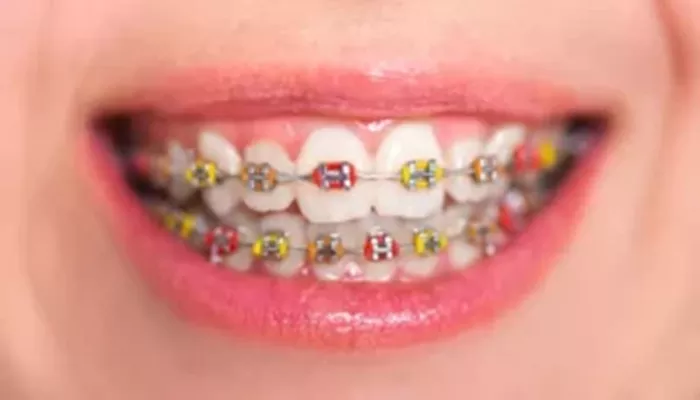Wisdom teeth removal is a common procedure for many adolescents and young adults. These third molars can cause various dental issues, such as crowding, impaction, and infection. After having wisdom teeth removed, many patients wonder when they can start wearing braces. This article will explore the relationship between wisdom teeth removal and orthodontic treatment, including the healing process, timing, and considerations for starting braces.
Understanding Wisdom Teeth Removal
1. What Are Wisdom Teeth?
Wisdom teeth are the last set of molars that typically emerge in late adolescence or early adulthood, usually between the ages of 17 and 25. For some people, these teeth can cause problems due to insufficient space in the jaw. This can lead to:
Impaction: Wisdom teeth may become trapped in the jawbone or gums.
Crowding: They can push adjacent teeth out of alignment.
Infection: Partially erupted wisdom teeth can lead to gum infections.
2. The Removal Process
Wisdom teeth removal is often performed by an oral surgeon or dentist. The procedure usually involves:
Anesthesia: Patients are given local or general anesthesia for comfort during the procedure.
Extraction: The dentist or surgeon removes the wisdom teeth, which may require cutting through the gums and bone.
Recovery: After the procedure, patients will need time to heal.
The Healing Process After Wisdom Teeth Removal
1. Initial Recovery
After wisdom teeth removal, patients typically experience some swelling, discomfort, and bleeding. The initial recovery period lasts about 3 to 5 days. During this time, it is important to follow post-operative care instructions, which may include:
Resting: Taking time off from work or school to heal.
Managing Pain: Using prescribed pain medications or over-the-counter pain relievers.
Dietary Adjustments: Eating soft foods to avoid irritating the extraction sites.
2. Complete Healing
While initial recovery occurs within a few days, complete healing of the extraction sites can take several weeks. Generally, the gums will heal within 1 to 2 weeks, but the bone may take longer to fully heal, often up to 3 to 6 months.
When to Start Wearing Braces After Wisdom Teeth Removal
1. Timing Considerations
The timing for starting braces after wisdom teeth removal can vary based on several factors:
Individual Healing: Each patient heals at their own pace. It is essential to wait until the extraction sites are fully healed to avoid complications.
Orthodontic Assessment: Before starting braces, an orthodontist will evaluate the patient’s dental health and alignment.
This assessment will help determine the appropriate timing for braces.
Age: Younger patients may heal faster than older patients, affecting the timing for braces.
2. Recommended Waiting Period
Most orthodontists recommend waiting at least 6 to 8 weeks after wisdom teeth removal before starting braces. This waiting period allows the gums to heal and reduces the risk of discomfort during orthodontic treatment. However, some patients may need to wait longer, depending on their healing process.
Factors Influencing the Decision to Start Braces
1. Orthodontic Evaluation
Before beginning braces, an orthodontist will conduct a thorough evaluation, which includes:
X-rays: To assess the positioning of teeth and roots.
Bite Analysis: To determine how the teeth align when the jaw is closed.
Dental Impressions: To create a model of the teeth for planning treatment.
2. Dental Health
The overall dental health of the patient plays a crucial role in determining when to start braces. If there are any remaining issues, such as cavities or gum disease, these should be addressed before beginning orthodontic treatment.
3. Type of Orthodontic Treatment
The type of braces or orthodontic treatment can also influence the timing. For example:
Traditional Metal Braces: These may require a longer waiting period due to the pressure they exert on the teeth and gums.
Clear Aligners: Some patients may be able to start treatment sooner with clear aligners, as they may be less irritating to the healing sites.
Benefits of Waiting to Start Braces
1. Reduced Discomfort
Starting braces too soon after wisdom teeth removal can lead to increased discomfort. Waiting allows the extraction sites to heal, making the braces process more comfortable.
2. Improved Treatment Outcomes
Allowing adequate healing time can lead to better orthodontic results. Properly healed gums and bone provide a stable foundation for braces, ensuring that the teeth can move into their desired positions effectively.
3. Enhanced Oral Hygiene
After wisdom teeth removal, patients may need to adjust their oral hygiene routine. Waiting to start braces allows patients to establish good oral hygiene practices, which are crucial for successful orthodontic treatment.
What to Expect When Starting Braces
1. Initial Discomfort
Once braces are applied, patients can expect some discomfort as their teeth begin to shift. This discomfort is usually mild and can be managed with over-the-counter pain relievers.
2. Dietary Changes
Similar to the post-operative period after wisdom teeth removal, patients will need to make some dietary adjustments when they first get braces. Soft foods are recommended to minimize discomfort and avoid damaging the braces.
3. Regular Orthodontic Visits
Patients will need to visit their orthodontist regularly for adjustments and monitoring throughout their treatment. This is essential for ensuring that teeth are moving as planned.
Conclusion
The timing for wearing braces after wisdom teeth removal is an important consideration for patients. While most orthodontists recommend waiting at least 6 to 8 weeks after the extraction, individual healing times and dental health will ultimately determine the best timing.
It is crucial to consult with both the oral surgeon and orthodontist to ensure that you are ready to start braces. Proper healing and assessment will lead to a more comfortable and effective orthodontic experience. With the right care and timing, you can achieve the smile you desire while ensuring a smooth transition from wisdom teeth removal to braces.
Related topics:

